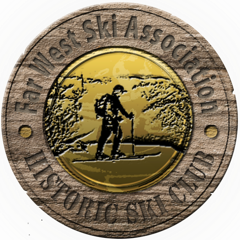The week of Memorial Day was a very busy week for me, your newsletter editor. The day before Memorial Day, I ran another marathon and BQ’d. It must have been the runner’s high or euphoria of some crazy nature, or maybe just plain craziness, but 3 days later, I was headed to Mount Shasta to climb to the summit with a group of 10. Of the 10, only 3 were experienced at mountaineering. We had backpacking experience, but not mountaineering experience. Heck, we had trouble figuring out how to put the crampons on! Nonetheless, , we enthusiastically set forth on our adventure with the assurance that 2 of the experienced climbers worked with Mountain Rescu! but had never climbed Shasta before. The plan was to hike/climb up on Day 1 from the at Bunny Flat trail head (6700 feet) and set up base camp at Helen Lake at 10,000 feet of elevation . On Day 2, the plan was climb to the summit and descend back to our cars .
Day 1 – The first couple of miles from Bunny Flat (I never saw any bunnies) were your garden variety backpack trail.
Then it became scree, loose rock. Loose scree rock gave way to snow. SOFT HEAVY snow!!! The stuff you sink into up to your knees at time especially with a 35 – 40 pound pack on your back. (reminder to self – bring trekking poles next time) The final ascent to Helen Lake was incredibly steep, but little did we know, the climb to the summit was to be much steeper at times. Camping in the snow at 10,000 feet can be bitterly cold, especially if the wind kicks up. To make this more difficult, Mount Shasta is one of the National Park sites where one is required to carry out one’s human waste! So, we had to take time to aim our derrières at paper targets, then collect the results into paper bags, then seal them into zip lock bags and pack it out. All this with frozen hands and rear-ends!
Day 2 – The summit climb was unforgivingly cold. We awoke at 2:30 but our group didn’t get going until almost 5 am. Other climbing groups set off much earlier, as early as 2:30. It was so cold that I wore a light base layer, a thick “expedition” weight base layer, a down vest AND a jacket and wasn’t too warm despite the exertion of climbing up a steep icy slope above 10,000 feet. Virtually everyone’s water froze. Even those with insulated hoses on their CamelBaks had frozen hoses and bite valves. I kept my bottle from freezing by keeping it inside my down vest! Despite that precaution, ice crystals could be seen forming in those few minutes when I took it out to drink from & share with others. As I had decided late to go on this climb, I didn’t have time to buy or break in proper mountaineering boots. My normal lightweight hiking boots gave me frozen toes for the first several hours of the summit climb. However, despite not having mountaineering boots, I never had the predicted problems with loose crampons. Word of advice – wear warm mountaineering boots!
The first climb from Helen Lake to Red Banks, a wall of red rocks, was entirely in the dark. The climb was so steep that our rhythm was to walk only 20 or 30 steps and rest for a few minutes. We chose nearby “goals” to aim for, rock formations that were only about 75 yards away. When we reached those goals, we sat down, rested, re-hydrated, ate a little and made crampon adjustments as needed. We were all so grateful when the sun finally rose high enough to warm our frozen bodies. But the warm sunny slopes meant that the icy slopes gave way to soft deep slushy snow! This was much harder to climb through than the ice. While easier to walk on, the ice was dangerous, . We had to learn how to execute an ice arrest with our ice axes in the event of falling and sliding down the mountain, or worse, off a cliff. In addition there was also the danger of falling rocks.
The mountain began to take it’s toll and only 3 of us 7 newbies made it to the summit. The rest succumbed to fatigue, dizziness, nausea, headaches and altitude sickness. My fellow summiters, Lauren, Chris and I were exuberant upon finally making it to the 14,179 foot summit. The summit views were incredible as Mount Shasta is a stand alone volcanic mountain, unattached to other mountains. Hence, we could see for miles around including Mount Lassen over a hundred miles away!
Descending was also taxing. The last picture above is of Lauren (in red) descending backwards using her ice axe and crampons to tackle this steep section. We learned this technique thanks to our mountain rescue fellow climbers, Todd and Joe. Thankfully, Todd and Joe accompanied us on the descent until we were within sight of our tents when they were certain we wouldn’t be stranded on the mountain. After descending back to Helen Lake in the heat of the day, we broke down our tent, rested and ate some, then descended back to Bunny Flat. It was a really tough day. We finally arrived at our car at 9:40 pm, the last portion of the descent in the dark by head lamp, of course. 19 hours after we woke up that day, we were finally done. It was a rewarding close to a strenuous and rewarding week.
Next climb – Kili! (I hope) Anyone who is reasonably fit and a lot of determination can do this climb! ~ Ed. ~



